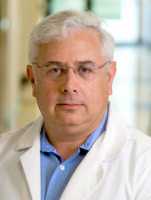22 May Single Protein May Promote Melanoma in BRAF Mutant Cells
MedicalResearch.com Interview with:

Dr. Ze’ev Ronai
Ze’ev Ronai, Ph.D.
Chief Scientific Advisor and Professor
Sanford Burnham Prebys Medical Discovery Institute
NCI-designated Cancer Center
MedicalResearch.com: What is the background for this study? What are the main findings?
Dr. Ronai: Our lab has been studying the role of the transcription factor ATF2 in melanoma, demonstrating it’s oncogene function and the ability to attenuate melanoma development once inhibiting this transaction factor activity.
We set to examine the role of ATF2 using the genetic melanoma model of BRAF/PTEN to find that inactive ATF2 promotes melanoma development in this model.
To our great surprise the transcriptional-inactive form of ATF2 was sufficient to promote melanoma development when combined with mutant BRAF, pointing to the “super” oncogenic capacity of this protein.
MedicalResearch.com: What should readers take away from your report?
Dr. Ronai: Our findings demonstrate that single event, expression of transcriptional inactive ATF2, may suffice to promote melanoma development in braf mutant melanocytes. A human splice variant of ATF2, which resembles the mouse form, was identified and found to exhibit similar activities in culture. These observations points to the relevance of our findings to human melanoma, which could be driven by such transcriptional inactive splice variants.
MedicalResearch.com: What recommendations do you have for future research as a result of this study?
Dr. Ronai: A key question that needs to be addressed pertains to the mechanism underlying the strong effects of this truncated protein. We expect that the underlying mechanism could provide new possible understanding for the development of this tumor.
Further, the presence of a human homolog form raises the possibility that one may be able to track expression of such a strong oncogenic form for diagnosis and therapeutic purposes.
MedicalResearch.com: Is there anything else you would like to add?
Dr. Ronai: Most genetic melanoma models combine a number of oncogene and tumor suppressor genes resulting in short latency for tumor development (usually several weeks). The ATF2 model described in the current study requires longer period for tumor development (~250 days) which resembles the human disease.
MedicalResearch.com: Thank you for your contribution to the MedicalResearch.com community.
Citation:
Ze’ev A. Ronai et al. A Transcriptionally Inactive ATF2 Variant Drives Melanomagenesis. Cell Reports, May 2016 DOI: 10.1016/j.celrep.2016.04.072
Note: Content is Not intended as medical advice. Please consult your health care provider regarding your specific medical condition and questions.
More Medical Research Interviews on MedicalResearch.com
Last Updated on May 22, 2016 by Marie Benz MD FAAD
